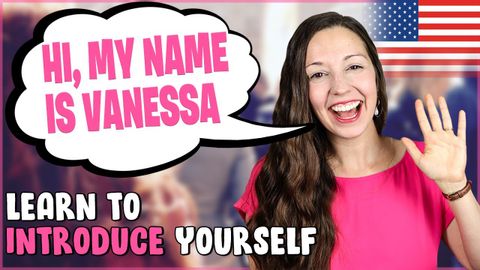如何进行自我介绍(How to INTRODUCE Yourself in English)
Jennifer 發佈於 2021 年 04 月 22 日  沒有此條件下的單字
沒有此條件下的單字US /ˌsɪtʃuˈeʃən/
・
UK /ˌsɪtʃuˈeɪʃn/
US /ˌrɛkəˈmɛnd/
・
UK /ˌrekə'mend/
US /ˈpræktɪs/
・
UK /'præktɪs/
- n.(醫生;律師等的)業務;工作;練習;慣例
- v.t./i.(醫生;律師等)開業;實踐;練習;操練;實踐
US /dɪˈskrɪpʃən/
・
UK /dɪˈskrɪpʃn/

